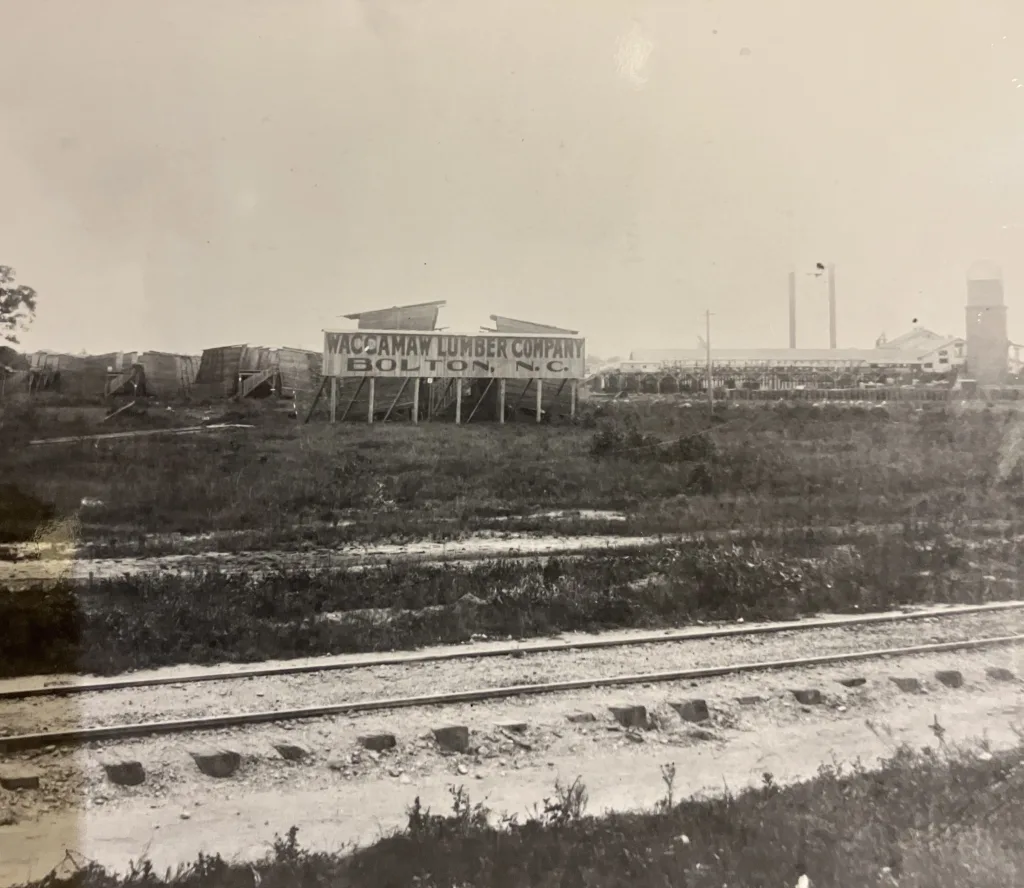
This is a selection of historical photographs depicting the Waccamaw Lumber Co.’s logging and lumber operations in Columbus and Brunswick counties. They date to the early 20th century, sometime, I would estimate, between 1910 and 1930.
They are now preserved, and available for the public to see, at Duke University’s David M. Rubinstein Rare Book and Manuscripts Collections Library.
Supporter Spotlight
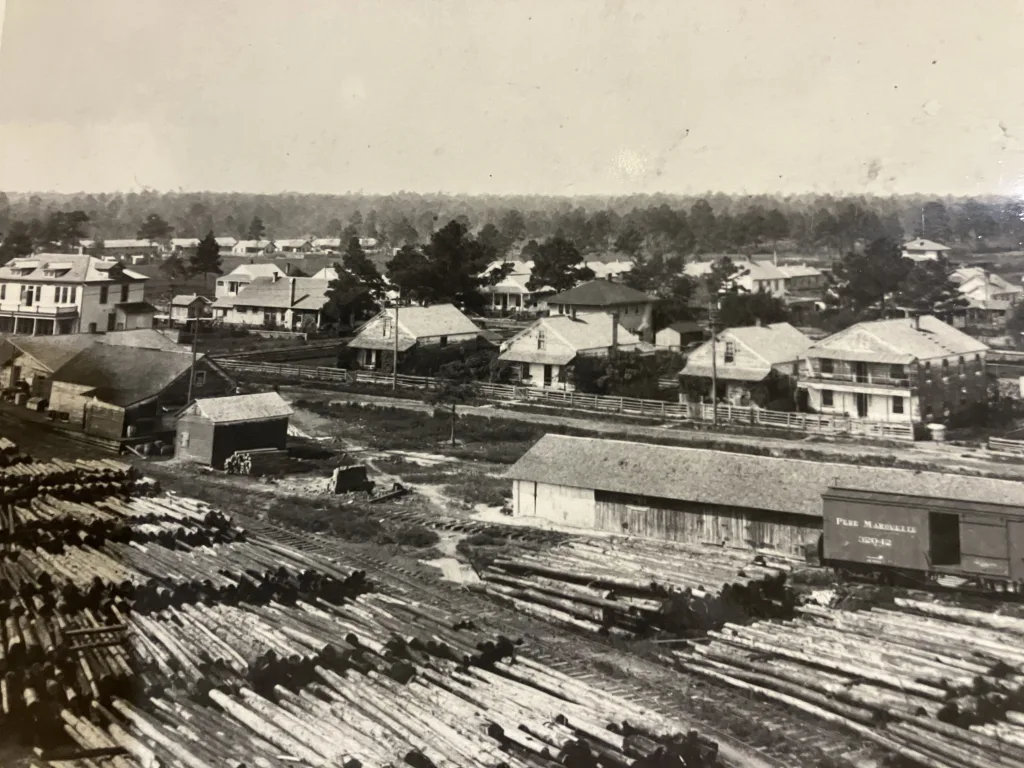
In my recent essay on the Italian immigrant laborers who built railroads on the North Carolina coast, I used four other photographs from that collection. You can find them here.

But I thought that quite a few of the other photographs in the collection were also worth sharing.
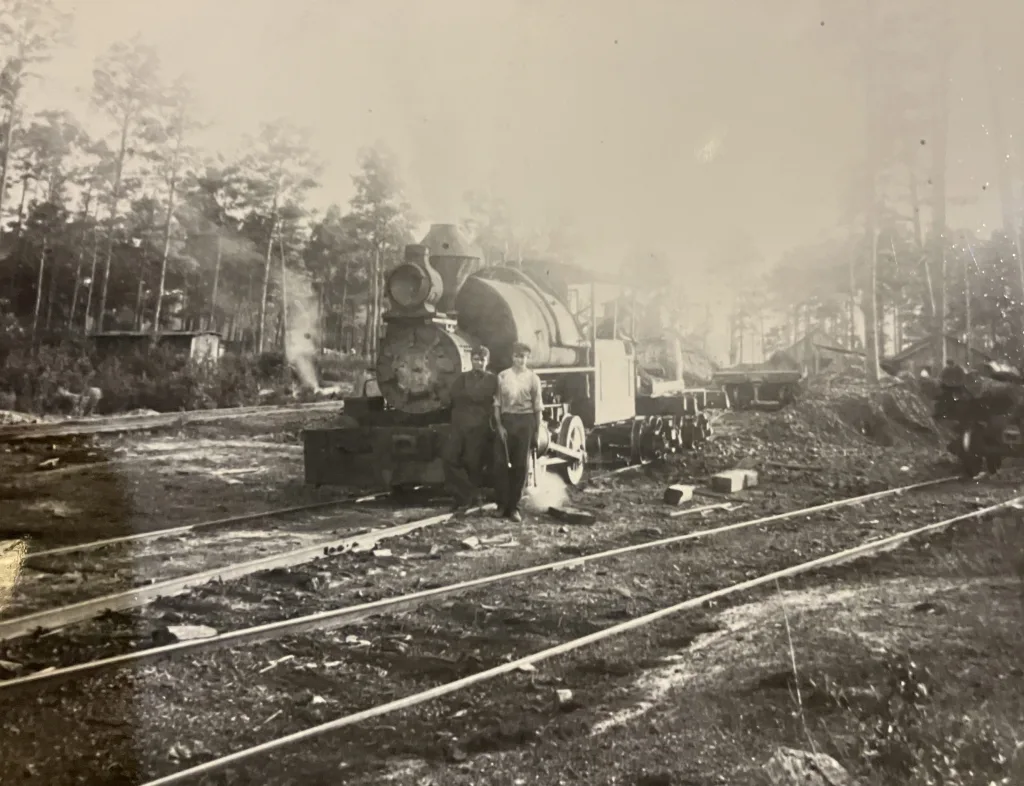
Incorporated in 1904, the Waccamaw Lumber Co. acquired more than 230,000 acres of land in Columbus and Brunswick counties in the first decade of the 20th century.
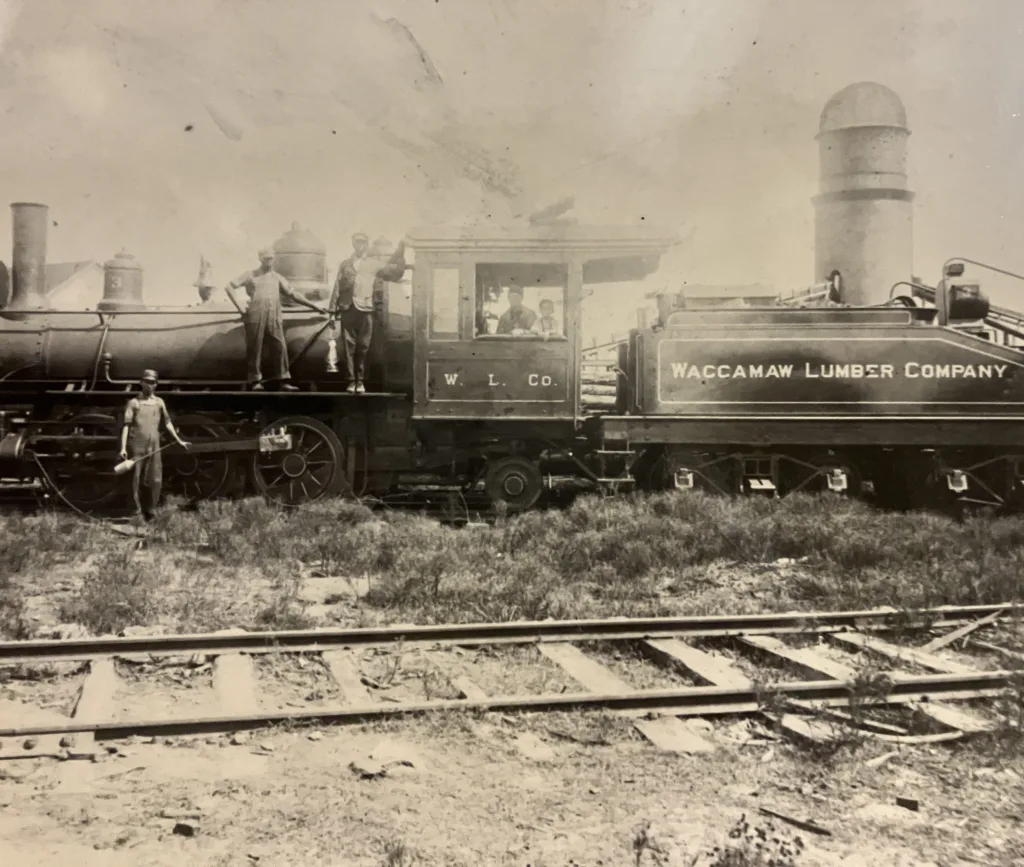
The company built a sprawling lumber mill in the town of Bolton, a logging camp called Makatoka, and an 18-mile-long railroad that ran into the Green Swamp.
One of the Waccamaw Lumber Co.’s train engineers, Anson Whitfield “Whit” Martin, took the photographs.
Supporter Spotlight
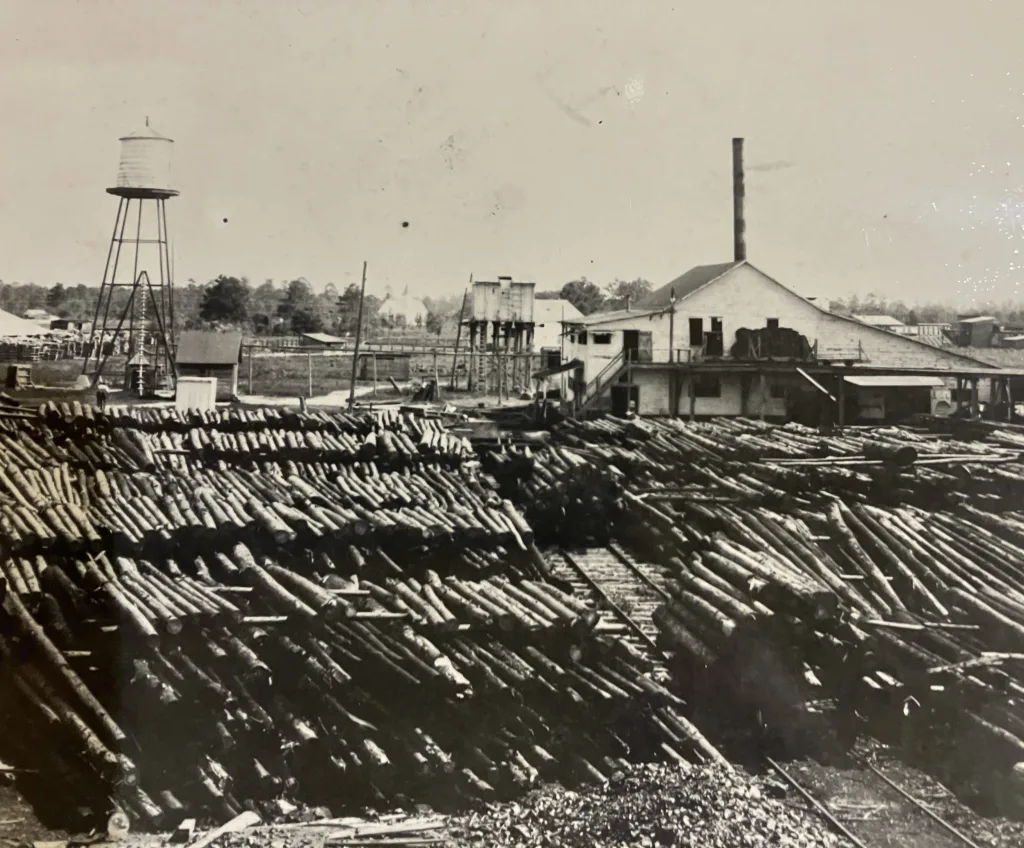
Whit Martin was born in 1883, so he was a relatively young man at that time.
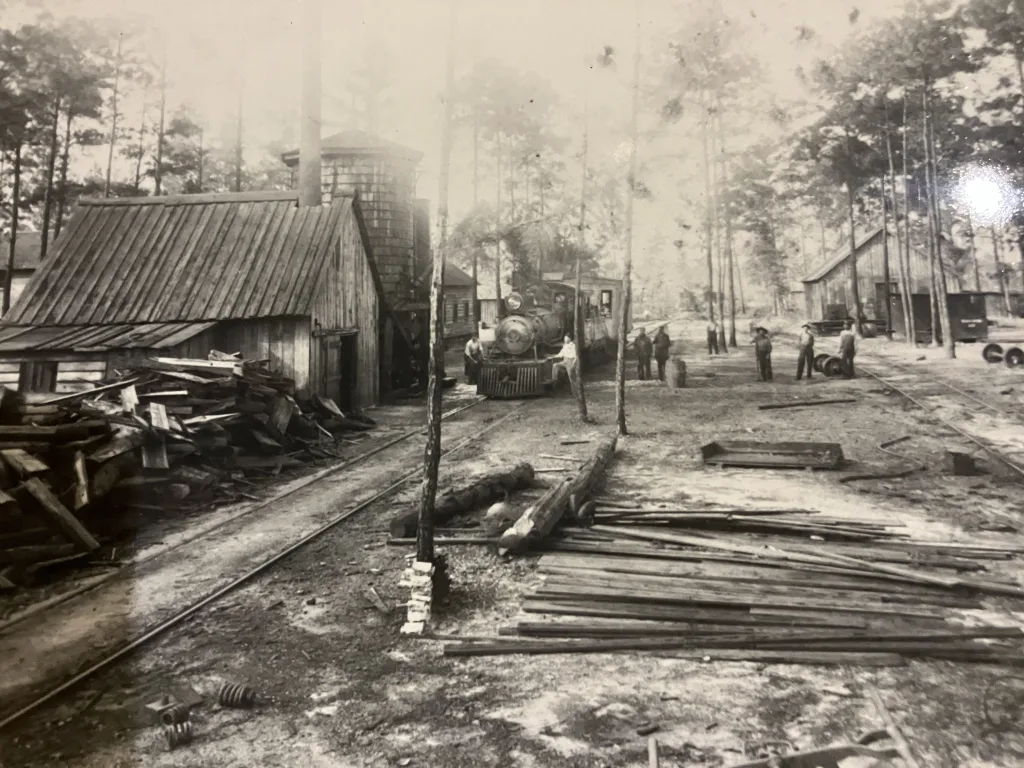
To write captions for the photographs, I have relied heavily on a special edition of a local heritage journal called Kin’ Lin’. That journal was published from 1975 to 1985 by the students at Hallsboro High School, 10 miles west of Bolton.
The journal’s faculty sponsors were Mary W. Mintz and Ruby Campbell. They apparently used the journal to improve the writing and research skills of their students, as well as to deepen their students’ appreciation for Columbus County’s history and cultural heritage.
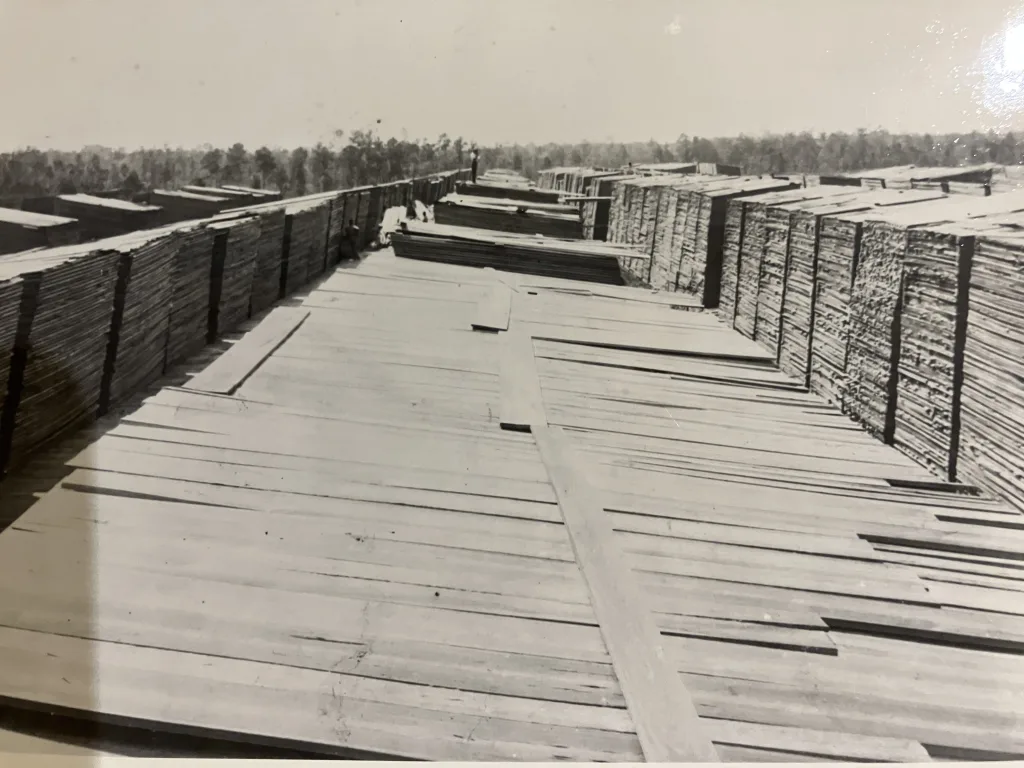
During the 1982-83 school year, Whit Martin’s widow, Bessie Burney Martin, leant the album containing her husband’s photographs to the students and faculty members who produced Kin’ Lin’.
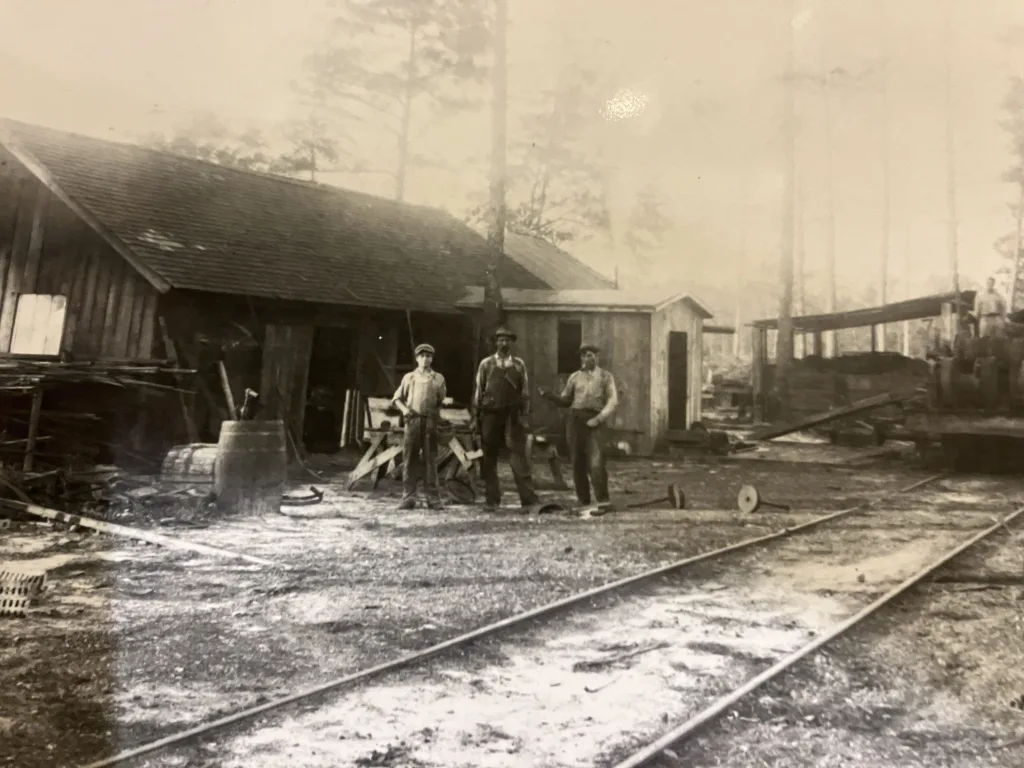
The students then built a special edition of Kin’ Lin’ around those photographs. They discussed the photographs with a diverse group of local senior citizens who had either worked at the Waccamaw Lumber Co. or who otherwise remembered its mill and logging camp.
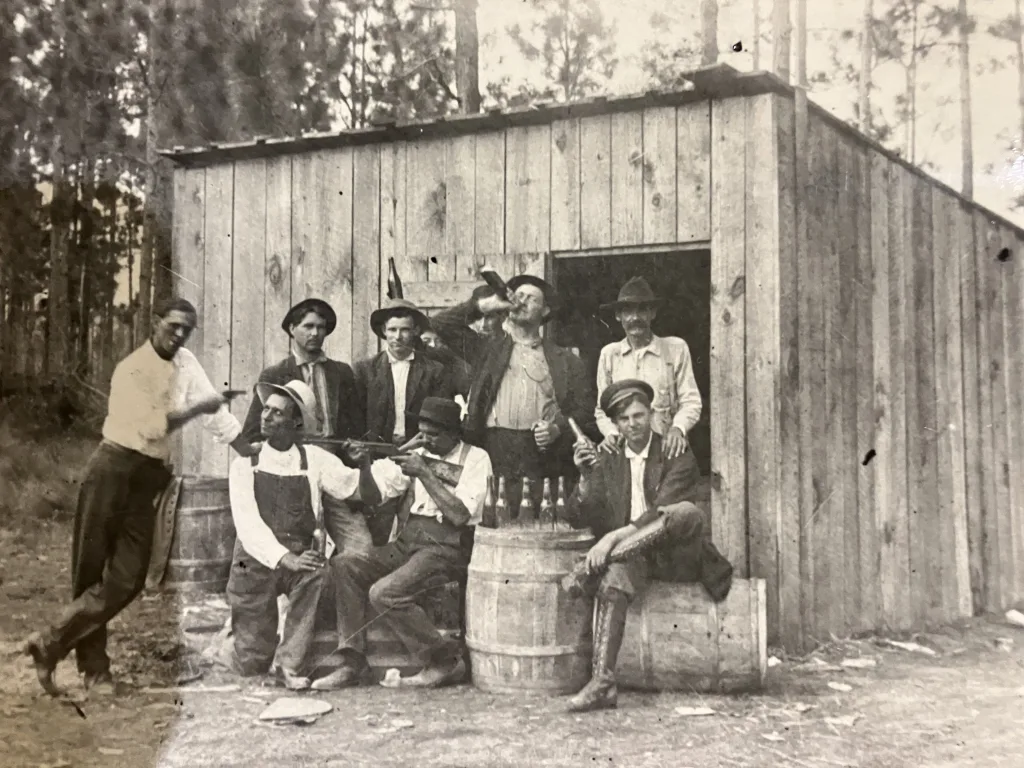
Those individuals were quite elderly by that time, of course. But they generously sat down with the students and answered their questions about the scenes in the photographs and their memories of the company and its workers.

A copy of that issue of Kin’ Lin’ accompanies the photographs that I studied at Duke’s library.
You can find that issue and other issues of Kin’ Lin’ elsewhere as well, including University of North Carolina Chapel Hill’s North Carolina Collection and at many local and regional libraries across the state.

The world of lumber mills and logging camps is one of the least documented parts of North Carolina’s coastal history.
The irony, and I suppose shame, of it all, though, is of course that the photographs give us a glimpse at an almost Wild West-like society of loggers and lumbermen that we can’t help but find almost irresistibly interesting.
Yet at the same time, we can’t forget that we are also seeing the inside of a lumber industry bonanza that was sweeping across the North Carolina coast then, cutting down thousands of square miles of ancient forests and draining and burning the land until it was unrecognizable, much like what we see happening in the Amazon rain forest today.
* * *
Coastal Review is featuring the work of North Carolina historian David Cecelski, who writes about the history, culture and politics of the North Carolina coast. Cecelski shares on his website essays and lectures he has written about the state’s coast as well as brings readers along on his search for the lost stories of our coastal past in the museums, libraries and archives he visits in the U.S. and across the globe.








